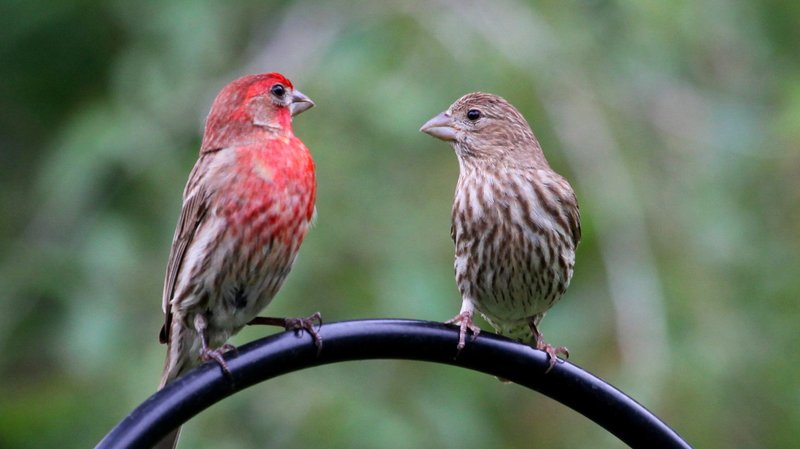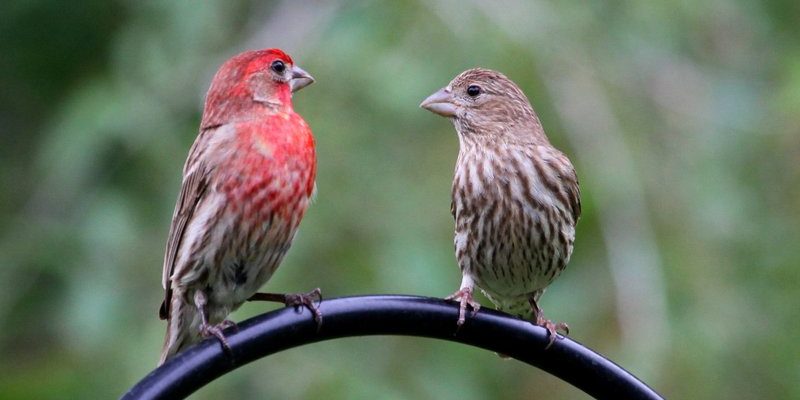
Introduction to the House Finch
Have you ever spotted a little bird with a cheerful song flitting about your garden? Chances are, you’ve come across the House Finch. These small, colorful birds are common in urban areas, parks, and gardens, bringing a splash of brightness to our everyday surroundings. They’re not just easy on the eyes; they also have fascinating traits that make them quite unique among finches.
The House Finch, with its vibrant plumage and sweet melodies, has an interesting story. Originating in the deserts of the southwestern United States, they’ve adapted remarkably well to life in cities and suburbs. By being so versatile, they’ve become a beloved sight for birdwatchers and casual observers alike.
In this article, we’ll explore various aspects of the House Finch, including its appearance, behavior, diet, nesting habits, and how to attract them to your own backyard. So, grab a cup of coffee, and let’s dive into the world of these charming birds!
Appearance and Identification
The House Finch is quite distinctive. Males are particularly eye-catching, sporting bright red or orange feathers on their heads, throats, and chests. This bold color is a result of their diet, which supplements their natural pigments with fruits and berries. Their wings and backs are usually streaked brown or gray, giving them a subtle contrast to their vivid chests.
Females, on the other hand, take a more understated approach. They lack the brilliant colors of the males and are primarily brown and streaky all over. This muted tone serves as great camouflage, helping them evade predators while they nest. You might confuse female House Finches with other brown birds, but their small size and distinctive beak—thick and conical—set them apart.
If you’re ever trying to spot one, listen closely! The House Finch has a cheerful, musical song that tends to vary based on regional dialects. They often chirp away cheerfully, adding to the vibrant atmosphere of gardens and parks.
Habitat and Range
You might be surprised to learn that House Finches have a wide range across North America. Initially, they lived in Western North America, but they’ve since expanded their territory. Today, you can find them from coast to coast, especially in urban settings. This adaptability is one of the reasons they thrive in various environments.
Their habitats can include deserts, mountains, and urban areas, making them true survivors. They often prefer places with easy access to food and nesting sites. You might spot them perched on telephone wires, foraging in gardens, or flitting in and out of trees, looking for seeds and fruits.
Interestingly, House Finches have learned to thrive in close proximity to humans. They often build their nests in eaves, hanging planters, and even inside buildings. This adaptability has allowed them to become a permanent fixture in our daily lives.
Diet and Feeding Habits
Let’s chat about what makes these little birds tick—food! House Finches predominantly eat seeds and fruits, but they’re not picky eaters. They enjoy sunflower seeds, berries, and even the occasional flower. This diverse diet helps them gather essential nutrients, and their strong beaks are perfectly designed to crack open seeds.
In urban settings, you might find them near bird feeders, taking advantage of the easy food source. To attract them to your backyard, consider providing bird feeders filled with a variety of seeds, particularly sunflower seeds and thistle. Adding berry bushes can also entice them to visit.
It’s fascinating to watch them feed. They often perch on a branch and drop the seeds they’ve cracked open to the ground, then swoop down to pick them up. Their feeding habits showcase their intelligence and adaptability, as they learn to navigate their environment for food.
Nesting and Breeding
When it comes to nesting, the House Finch is quite resourceful. They typically build their nests in shrubs, trees, or even human structures. A typical nest is a neat bowl made from twigs, grass, and other materials. They’re crafty in finding suitable spots, often opting for areas that offer protection from predators.
The breeding season for House Finches usually spans from early spring to late summer. Nesting pairs are often seen involved in a variety of behaviors, including preening and feeding one another. After a week or two, the female lays a clutch of about three to six eggs, which hatch in about 12 to 19 days.
Once the chicks are born, both parents contribute to feeding their young. The fledglings leave the nest about two weeks after hatching. As you can see, family life for House Finches is a busy and collaborative affair, showcasing their strong bonds and teamwork.
Behavior and Social Structure
You might be wondering about the social lives of House Finches. They are typically found in small flocks, especially outside the breeding season. These flocks can be quite lively, filled with chirps and chatter as the birds communicate with one another. They’re known for their curious nature, often exploring their surroundings together.
House Finches are also quite adaptable in their interactions with other species. You’ll find them sharing feeding spots with other birds, and they generally exhibit a non-aggressive demeanor. This friendly attitude can be a great advantage in urban areas where competition for food can be tough.
Interestingly, House Finches have a unique way of demonstrating their allegiance. Males often perform a “courtship display,” puffing up their feathers and singing to attract a mate. This display is both an act of attraction and a way to assert their presence in the area.
Threats and Conservation
While House Finches are quite abundant, they’re not without challenges. One significant threat they face is habitat loss due to urban development. As cities expand, the natural spaces where they nest and forage can diminish. However, their adaptability allows them to shift their ranges and find new homes.
Additionally, these birds are susceptible to diseases that can spread rapidly through dense populations. However, conservation efforts are in place to monitor and support their health. Keeping your backyard bird-friendly by providing food and nesting materials can also play a part in their well-being.
It’s essential to remember that even common birds like House Finches need our protection. By creating safe spaces for them and reducing the use of pesticides, we can help ensure their survival.
Fun Facts About House Finches
Here’s where things get fun! House Finches have some quirky traits that make them even more interesting:
- Vocal Variety: House Finches have a unique ability to mimic sounds from their surroundings, including other birds and even mechanical noises.
- Color Variation: Male House Finches can vary from deep red to orange or even yellow, depending on their diet and genetics.
- Migration Patterns: While many House Finches are residents in their habitats, some do migrate short distances during harsh weather conditions.
These little nuggets of information can make you appreciate the House Finch even more. The next time you see one flitting about, you’ll be aware of the rich life they lead!
How to Attract House Finches
If you’re eager to welcome House Finches into your garden, there are some simple tips to consider:
- Provide Food: Set out bird feeders filled with sunflower seeds and other grains to entice them.
- Plant Native Vegetation: Adding berry bushes or flowering plants can provide natural food sources.
- Create Shelter: Ensure that there are shrubs or trees nearby for nesting and resting.
By following these guidelines, not only will you attract House Finches, but you’ll also create a vibrant ecosystem in your backyard.
FAQ
What is the lifespan of a House Finch?
House Finches typically live around 3 to 5 years in the wild. However, some individuals have been known to live up to 11 years when conditions are favorable. Factors such as predation, food availability, and habitat can influence their lifespan.
Do House Finches migrate?
Unlike many bird species, House Finches are generally non-migratory. They tend to stay in their habitats year-round, though some individuals may migrate short distances in response to food shortages or harsh weather conditions.
How can I identify a male and female House Finch?
Males are usually vibrant with red or orange plumage on their heads, throats, and chests, while females have a more subdued brown and streaky appearance. Both share similar body shapes and sizes, but the color difference is the easiest way to identify them.
Can House Finches eat bread?
While House Finches can eat bread, it’s best to limit this as a food option. Bread doesn’t provide the necessary nutrients they need and can also lead to digestive issues if consumed in large amounts.
What do House Finches symbolize?
In various cultures, House Finches symbolize joy and nourishment. Their presence often brings a sense of cheerfulness, as their songs and colorful appearances can brighten any environment.
Are House Finches aggressive?
Generally, House Finches are not aggressive birds. They tend to be social and will often share feeding spots with other species. However, males can display protective behaviors during the breeding season.
How do House Finches care for their young?
Both male and female House Finches participate in caring for their young. After the chicks hatch, the parents take turns feeding them and keeping them safe until they are ready to leave the nest.
Can House Finches be kept as pets?
While it’s possible to keep House Finches in captivity, it’s essential to provide a suitable habitat and meet their dietary needs. However, they are best appreciated in the wild, where they can exhibit their natural behaviors.
What do adult House Finches eat?
Adult House Finches primarily feed on seeds, fruits, and berries. They have strong beaks that help them crack open seeds and forage for insects when needed.
Are House Finches common in urban areas?
Yes, House Finches are very common in urban areas. Their adaptability to different environments makes them a familiar sight in gardens, parks, and even on city streets.
Do House Finches mate for life?
House Finches do not mate for life; instead, they typically form pair bonds for a single breeding season. After raising their young, they may mate with different partners in subsequent seasons.
How can I help House Finches in my area?
To support House Finches, you can provide a safe environment in your backyard with food, water, and suitable nesting spots. Avoid using pesticides and create a rich habitat that encourages biodiversity.
What is the best time to observe House Finches?
House Finches can be observed year-round, but early mornings and late afternoons are particularly good times to spot them as they are most active during these hours, foraging and singing.

